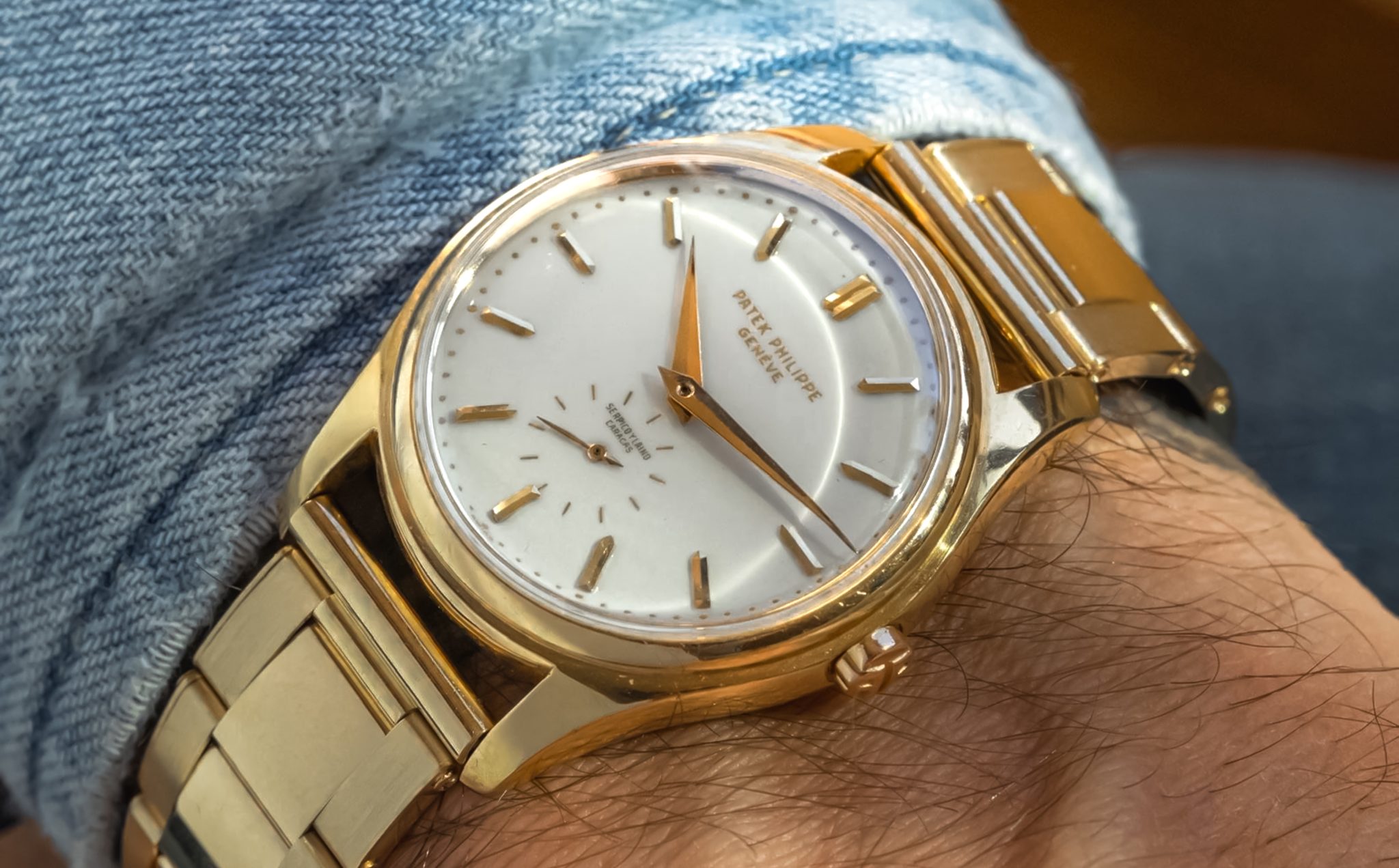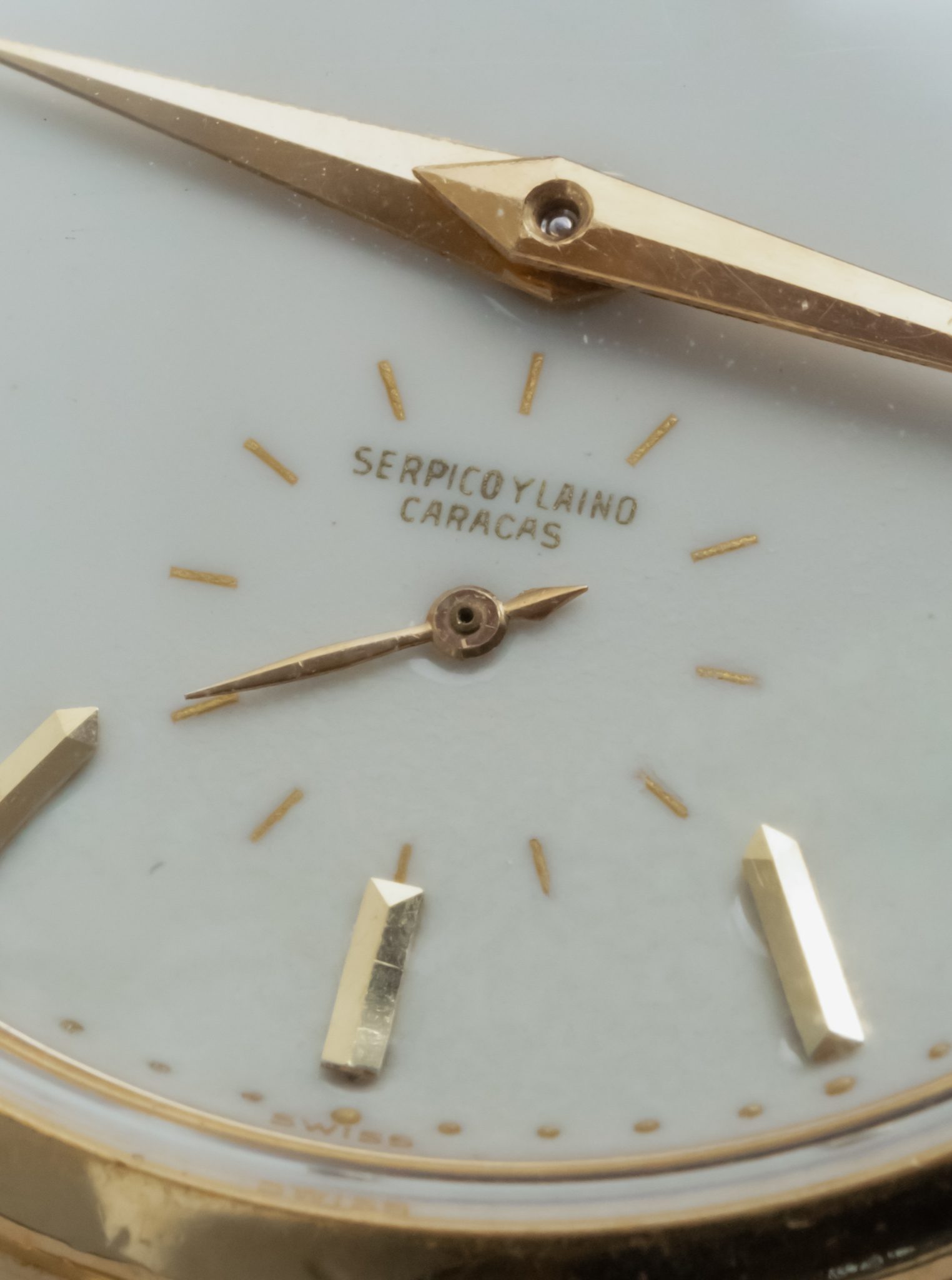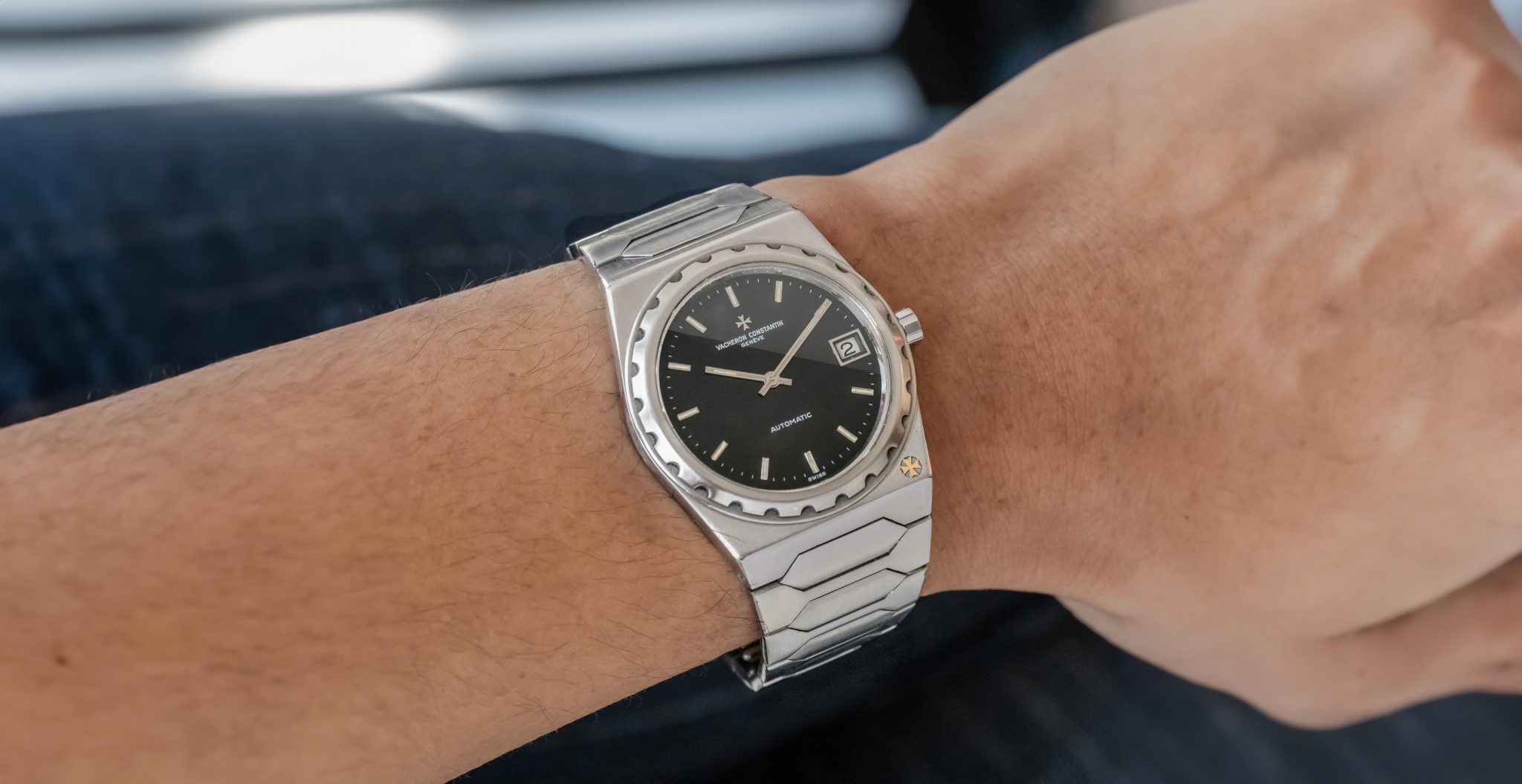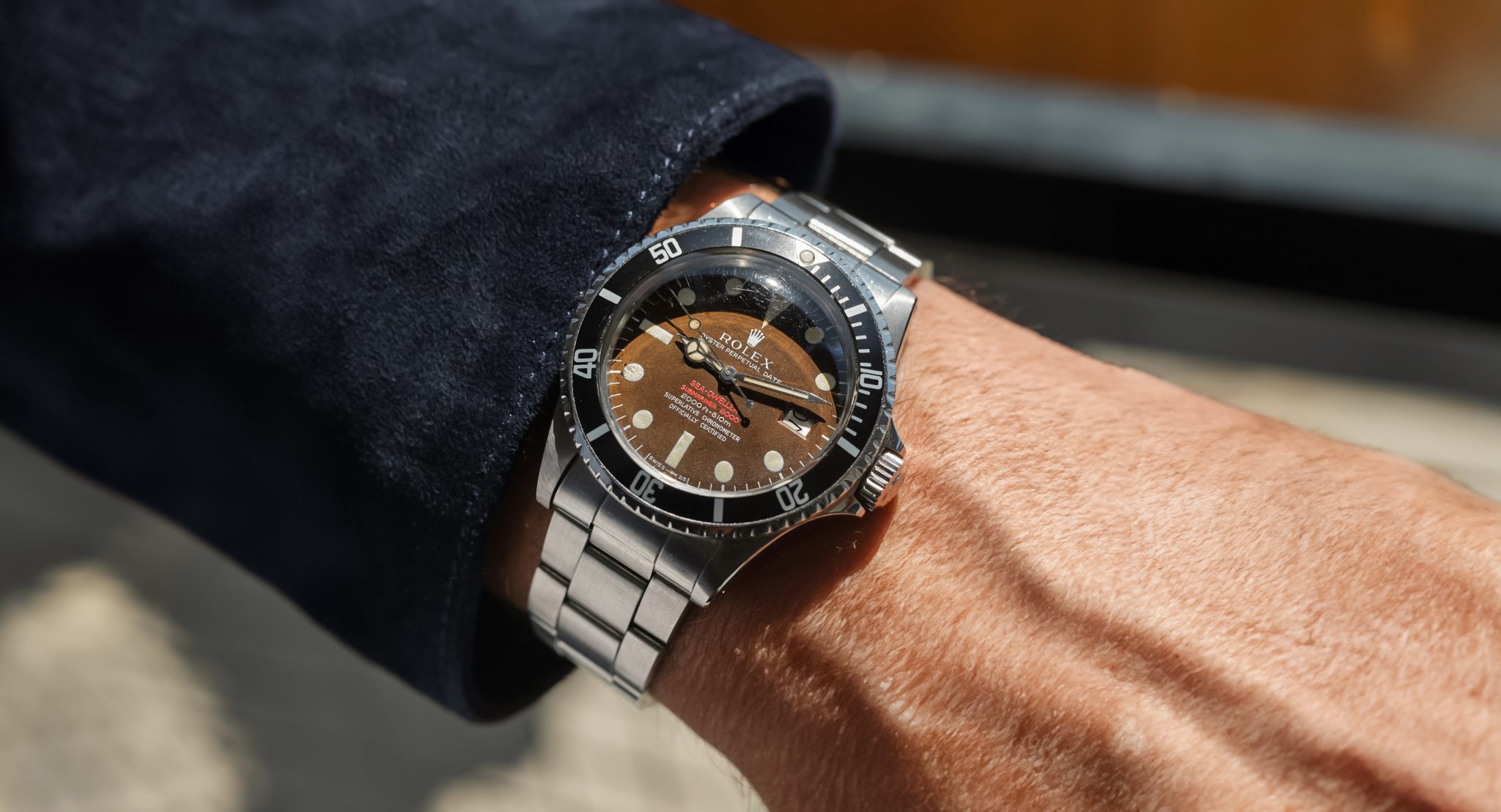
Serpico Y Laino Dial 2526 Patek Philippe Calatrava
Enamel dials are a dying art. Only a handful of watchmakers still attempt the process and in Switzerland it’s just Donzé Cadrans who still specialize in enamel dials independent of any manufacture. But the white enamel dials of the ref. 2526 are quite unlike any other. They are far creamier in tone than any other enamel we see from Patek, with a lustre that is often described as porcelain. This has made them quite famous, studied, and collected, in addition to the fact that it was the first time Patek advertised a new watch around its thinness. Aside from the obvious beauty, there’s a lot of metaphoric and literal depth to cover here. Particularly for this example, which is signed ‘Serpico Y Laino, Caracas’ with an ‘SyL’-signed clasp and back.

When you fire enamel powder it adheres to the base metal, with layers built up on top to create the degree of depth you’re looking for. The thicker the enamel, the more depth. Modern dials are fired between 5 and 10 times to create this lustre. The 2526 is rumored to have been fired only twice at Stern Frères, with two pleasingly thick applications. The fewer the fires and the thicker the layers, the greater failure rate. For modern firing, 1 in every 6 or so is selected. For something like this, it would’ve been about 1 in 10. Additionally, only on this reference, the dial’s base was made of silver. Most enamel dials you’ll find today have a copper base. Hence you get this deep cream, porcelain sheen. But they are also more fragile. For this precise reason, they’re tricky to hunt. Hairline fractures are common and, as almost all the value is in the dial, one has to be diligent. But as far as dials are concerned, the 2526’s depth cements its reputation as king of Calatravas.

This is all not even to mention that the 2526 was Patek’s first self-wound watch with the calibre 12-600 AT. In 1953, the retail price on bracelet was 3400 CHF, just 400 CHF less than a 2499. That should tell you something about the quality here. Both are a little more these days. Fun fact, also: the 2526 very likely has the very first decorated rotor in history. It is estimated that only 500-600 examples were ever made between 1953 and 1960, with far fewer surviving today for the reasons we’ve just described. It’s worth noting that many have replacement dials, so be cautious. The more bright white an example’s enamel is, the more questions you should ask. The 2526 is one of the ultimate examples of timeless Swiss craft, one which just reveals more to you the more closely you study it.

This example is a clear standout not only for its dial, which is cream and lovely without any visible fractures, but the signature as well. I just adore when Serpico signatures included the city, that’s all kinds of cool. Its caseback is signed correctly, same with clasp. The case has seen a polish but still has quite deep engravings. It comes from a retailer out of Portugal, with the cherry on top: its full set box and papers.








